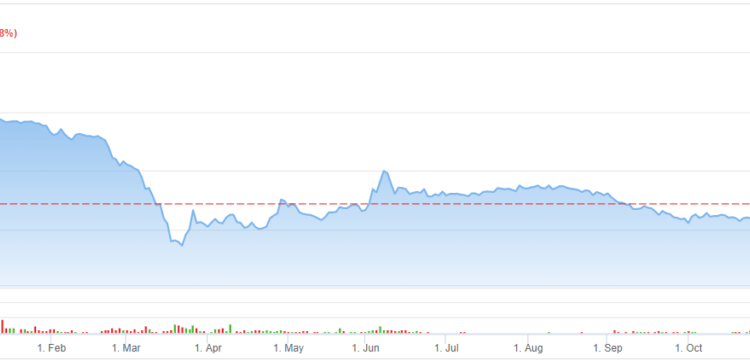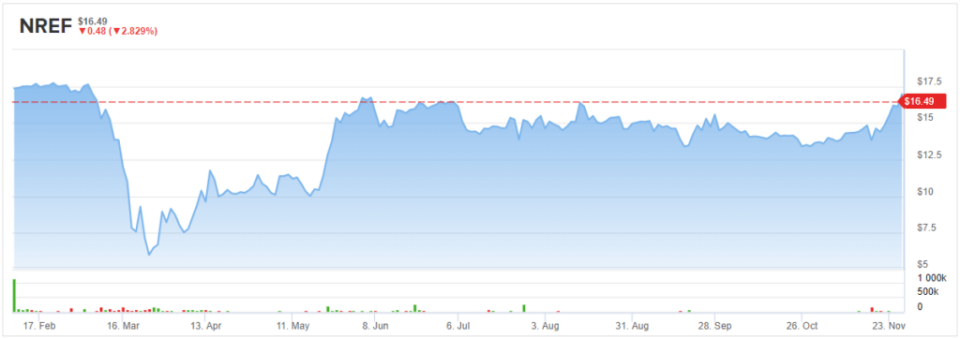
Dividend stocks are the Swiss army knives of the stock market.
When dividend stocks go up, you make money. When they don’t go up — you still make money (from the dividend). Heck, even when a dividend stock goes down in price, it’s not all bad news, because the dividend yield (the absolute dividend amount, divided by the stock price) gets richer the more the stock falls in price.
Knowing all this, wouldn’t you like to find great dividend stocks? Of course you would.
Raymond James analysts have chimed in – and they are recommending two high-yield dividend stocks for investors looking to find protection for their portfolio. These are stocks with a specific set of clear attributes: a dividend yield of 10% and Strong Buy ratings.
Kimbell Royalty Partners (KRP)
We’ll start with Kimbell Royalty Partners, a land investment company operating in some of the US’ major oil and gas producing regions: the Bakken of North Dakota, Pennsylvania’s Appalachian region, the Colorado Rockies, and several formations in Texas. Kimbell owns mineral rights in more than 13 million acres across these regions, and collects royalties from over 95,000 active wells. Over 40,000 of those wells are in the Permian Basin of Texas, the famous oil formation that has, in the past decade, helped turn the US from a net importer of hydrocarbons to a net exporter.
The coronavirus crisis hit Kimbell directly in the pocketbook, knocking down share prices and earnings as economic restrictions, social lockdowns, and the economic downturn all struck at production and demand. The situation has only begun to revive, with the Q3 revenues growing 44% sequentially to reach $24.3 million.
Kimbell has long been a reliable dividend payer, with a twist. Where most dividend stocks keep their payouts stable, typically making just adjustment in a year, Kimbell has a history of reevaluating its dividend payment every quarter. The result is a dividend that is rarely predictable – but is always affordable for the company. The last declaration, for the third quarter, was 19 cents per common share, or up 46% from the previous quarter. At that rate, the dividend yields ~10%,
Covering the stock for Raymond James, analyst John Freeman noted, “Despite a strong quarterly performance and a nearly 50% distribution raise in 3Q, the market continues to under appreciate the unique value proposition of Kimbell’s assets, in our view. Kimbell has a best-in-class 13% base decline, exposure to every major basin and commodity, as well as a very manageable leverage profile…”
Regarding the possible anti-hydrocarbon stance of a Biden Administration, Freeman sees little reason for worry, saying, “Investors concerned about a potential Biden presidency (which appears increasingly likely) have little to fear in KRP. The company has less than ~2% of acreage on federal lands, meaning a frac ban on those properties would not have a material impact on KRP’s business and might actually help them if it improved the overall supply impact.”
In line with these comments, Freeman rates KRP a Strong Buy, and his $9 price target implies it has room for 25% growth going forward. (To watch Freeman’s track record, click here)
Wall Street appears to agree with Freeman, and the analyst consensus view is also a Strong Buy, based on 5 unanimous positive reviews. This stock is priced at $7.21, and its $11 average target is even more bullish than Freemans, suggesting a one-year upside of ~52%. (See KRP stock analysis on TipRanks)
NexPoint Real Estate Finance (NREF)
NexPoint inhabits the real estate trust niche, investing in mortgage loans on rental units, both single- and multi-family occupancy, along with self-storage units and office spaces. The company operates in the US, across major metropolitan hubs.
NexPoint held its IPO in February this year, just before the coronavirus pandemic inspired an economic crisis. The offering saw 5 million shares sell, and brought in some $95 million in capital. Since then, the shares are down 13%.
Earnings, however, have posted gains in each full quarter that the company has reported as a public entity, coming in at 37 cents per share in Q2 and 52 cents in Q3. The Q3 number was 30% above the forecast.
The dividend here is also solid. NexPoint started out with a 22-cent per share payment in Q1, and raised it in Q2 to its current level of 40 cents per common share. This annualizes to $1.60, making the yield an impressive ~10%.
Stephan Laws, 5-star analyst with Raymond James, is impressed with what he sees here. Laws writes of NexPoint, “Recent investments should drive significant core earnings growth, which is reflected in the increased 4Q guidance range of $0.49-0.53 per share (up from $0.46-0.50 per share). The guidance incorporates the full quarter impact of the new 3Q investments as well as new mezz investments made in October. We are increasing our 4Q and 2021 estimates, and we have increased confidence in our forecast for a 1Q21 dividend increase, which we now forecast at $0.45 per share…”
Following these sentiments, Laws puts a Strong Buy rating on NREF. His $18 price target suggest the stock has a 9% upside potential for the year ahead. (To watch Laws’ track record, click here)
With 2 recent Buy reviews, the analyst consensus on NREF shares is a Moderate Buy. The stock’s $18 average price target matches Laws’, implying 9% growth. (See NREF stock analysis on TipRanks)
To find good ideas for dividend stocks trading at attractive valuations, visit TipRanks’ Best Stocks to Buy, a newly launched tool that unites all of TipRanks’ equity insights.
Disclaimer: The opinions expressed in this article are solely those of the featured analysts. The content is intended to be used for informational purposes only. It is very important to do your own analysis before making any investment.

